МОНГОЛ ИНЖЕНЕРИЙН УР УХААН, МОНГОЛ ТЕХНОЛОГЧИЙН УР ЧАДВАР ШИНГЭСЭН “ӨВ СОЁЛ ҮЙЛДВЭР” ХХК ҮҮД ХААЛГАА НЭЭЛЭЭ
З.Цэвээндорж: Маргаашаас нийтийн тээврийн үйлчилгээний төлбөр 1000 төгрөг болно
Англи хэлний багш нарыг бэлтгэх, чадавхжуулах төслийн талаар санал солилцов
Сонгинохайрхан дүүргийн 20 дугаар хороо, Толгойтын даланд 135 метр суваг татлаа
Засгийн газрын Хяналт хэрэгжүүлэх газартай хамтран ажиллах санал солилцлоо
Б.Лхагвасүрэн: 2025 он бол маш том сорилтын жил байх болно
Д.Амарбаясгалан: Анх удаа алдагдалгүй төсөв баталж чадсан нь парламент олон ургалч үзлээр асуудалд хандаж буйн илрэл юм
Хаврын саруудын цаг агаарын ерөнхий төлөв
ЭНЭ ӨДӨР: Австрийн нэрт хөгжмийн зохиолч Франц Шуберт мэндэлжээ
МУИС-ийг МҮИС-д бэлэглэх үү?
Yo.Onon: Local community will be involved themselves in management of hunting zone, select hunting companies
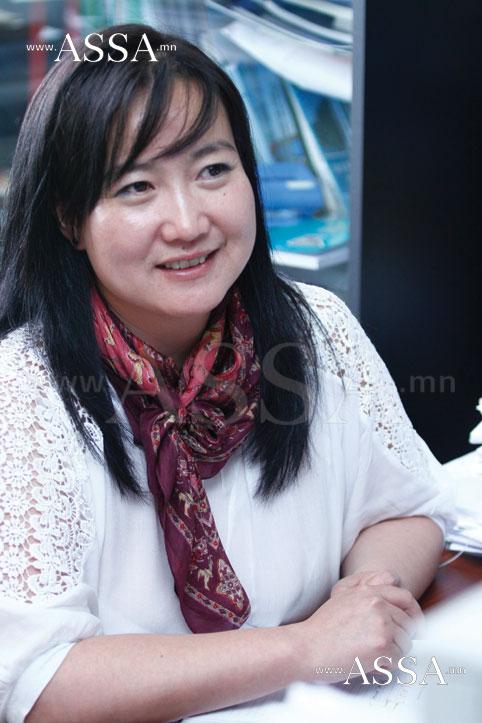
-How often do you conduct census on rare species? Particularly, how do you get the numbers of rare animals?
-It is appropriate to talk about population since it is planned to be hunt. Law on Fauna states that research and monitoring programs of very rare and rare animals should be funded by state budget. Thus census of very rare and rare animals is done once in 4-5 years. People should have a clear understanding about it. It is impossible to count wild animals like livestock. Wildlife census is conducted according to internationally recognized methodology. When we talk about wildlife census, it should have number of minimum and maximum. For example, there are 5000-20000 argali sheep in Mongolia.
-Can you tell us factual numbers of very rare and rare animals?
-Sure. World Wildlife Fund and Institute of Biology conducted census of mountain and steppe hoofed mammals funded by Ministry of Nature, Environment and Tourism in 2010. It tells us that we have 19000 argali sheep, 24000 ibexes, 12000 goitered gazelles, 16000-19000 red deer, 7000 moose, 35000 boars, 29000 roe deer, 6500 musk deer, 14000 wild asses and 3 million white gazelles. But legally allowed number of hunting should not be determined by these figures. The issuance of hunting permit depends on whether the animal’s population growth is normal or slow.
-When we talk about hunting with special purpose, it seems like it is just foreigners deal…
-Foreigners mostly come here for hunting with special purpose. Local hunters can do it too. There is no such special permit for only foreigners. The reason of local hunters do not get this kind of hunting is related to high fee. According to law on hunting, it states that three purposes of hunting should be special purposes, industrial and household. Hunting with special purpose means the way to hunters pay high fee for license. This kind of hunting can be research, sport or just prey.
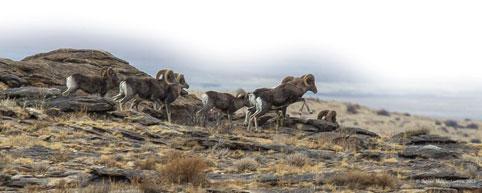
-You may see how celebrities, even politicians show publicly their pictures of hunting rare animals?
- Rare species are not allowed to be hunt for household and industrial purposes. Even Mongolian citizen must to get a permit. Hunting should be done only according to special purposes defined by Government.
-It was heard that special permit issuance system of the Ministry has slightly changed?
-Yes, the procedure was amended. Quotas were given to companies according to the figures approved by the Government previously. In other words, as soon as figures approved quotas were allocated to the companies which serve for foreign hunters. Then companies which have quotas have to find a place where species live and get approval from local governors. After the process license of the Ministry is released. Whole this process means local community or herders are not required to get involved. They are not even interested in participation because it has no benefit for them. Now this system is fundamentally changed. Currently hunting zones like Bataarkhairkhan mountains of Khovd province, Gulzat hunting zone of Uvs province, Khangai region of Tuv province hold authority to decide quotas themselves. These are the research areas of our Ministry. Since they already know the population of wildlife, it’s not that hard to estimate how much could be hunt.
-Then how do the local community participate in this process?
-Local community of these areas should work as a legal body responsible for hunting zone. Local community should involve in this process as much as possible. They establish nature conservation cooperatives and pasture management unions. And the legal body should be responsible for hunting zone management, select companies to hunt in their area. When company is selected, decision on amount of rare animal to be hunt is made by a contract and then three-party agreement on hunting is made with soum Governor. Based on that agreement, the Ministry issues its special hunting permit.
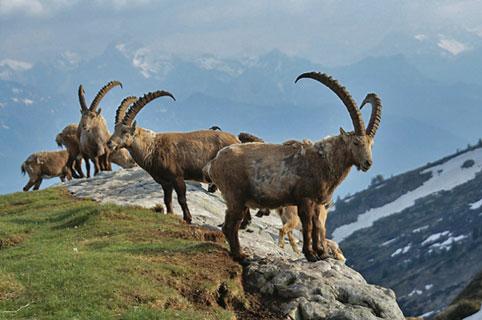
-Of course, certain percent of revenue goes to local community or legal body?
- Amendment of Law on Budget states that hunting license fee is included as part of the revenue of local budget. In the past, hunting license fees were directly goes to the state budget and only charges were left in soum. For example, license fee to hunt altai argali sheep is about 14000 USD. Of which $14000 goes to the state and the rest charge of $4000 goes to soum budgets. Now whole money plus charges directly goes to soum account. The local administration should spent half of money for management of the hunting zone. Since local community got a right to use, funding for conservation is supported by policy.
-Are such cooperatives or union of local community existing right now? Do they have any experiences of making contract with companies and soum administration?
-Sure, we have.The newly established union and NGO of Lun and Undurshireet soums, Tuv province made a contract with the company “Dorniin Suvd”. The Gulzat Local Protection Area of Uvs aimag also established NGO which is responsible to management of the area. They made a deal with the company “MAT” for two argali sheep.
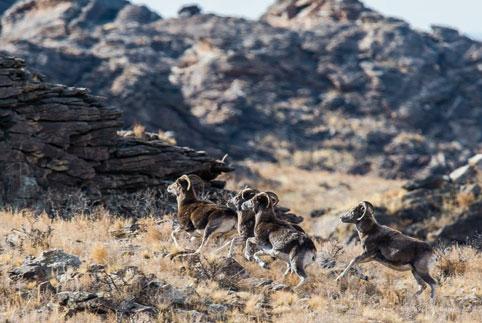
-Where do foreigners who are most of hunters get information on that?
-It is hard get information for foreign citizen. The Ministry’s website language option is limited as it’s in Mongolian. We equally provide business entities with information on newly developed policies and regulations. We invited them to three meetings. Unfortunately they were idle and slow. But several business entity representatives came late when it came to make contracts for hunting quotas. They acted like they have no information about new changes and asking what happened, why all the things changed. Not only local companies but also foreign companies want to get information. I try to provide information as much as possible.
- It is obvious that special permission is required to take away hunter trophy abroad. But who controls how many animals exactly were hunted by license for only one?
-Of course, they should get a certificate for the trophy of hunting. Foreign hunters can take away only skin and horns. Meat and other raw materials are restricted to take out. People in charge of hunting zone management have to take control. Foreign hunters mostly come here to take only skin and fur. They cannot hunt two by license of one and go through customs. I never heard of such incidents.
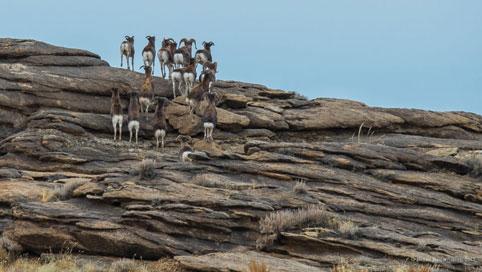
-New management way of conserving rare animals population will be existed further. Can you give us more information?
-Its related to the impact of decreasing reason of wildlife animals. The topmost impact on Mongolian wildlife population is pasture degradation. It is caused by livestock growth. When pasture degrades, it downs variety of green plants. Consequently it affects living condition of wild animals. They cannot get enough nutrition to keep its population. Therefore pasture land management is required to associate with wild species management. So we ask to protect pasture while protecting wildlife. At least it would lower a risk of livestock loss to dzud. We are asking to leave some space for wildlife. And we give local communities a right to protect wild animals and to receive benefit when numbers of wild animals are enough to hunt.
-What about the responsibility of this kind of management?
-Legal body of the hunting zone are responsible to any case. For example, a cooperative responsible for hunting zone with 70 argali sheep should not decrease the number of animals. Responsibility will be charged according to deal and related regulations. Three subjects that represent department of nature, environment and tourism of the province, local community and soum’s governor are legally responsible for hunting zone because they sign the joint agreement.
Mongolian Government approves annual limit and species for trapping and hunting. The Government allowed hunting 15 argali sheep, 32 ibex, 10 red deer, 50 wolves, 40 roe deer and 10 boars and fishing 200 taimen. It is five times lower than previous years. We interviewed Yo.Onon, specialist of Environment and Natural Resource Department of Ministry of Nature, Environment and Green Development about further policy on special purpose hunting and assessment of rare animals population.

-How often do you conduct census on rare species? Particularly, how do you get the numbers of rare animals?
-It is appropriate to talk about population since it is planned to be hunt. Law on Fauna states that research and monitoring programs of very rare and rare animals should be funded by state budget. Thus census of very rare and rare animals is done once in 4-5 years. People should have a clear understanding about it. It is impossible to count wild animals like livestock. Wildlife census is conducted according to internationally recognized methodology. When we talk about wildlife census, it should have number of minimum and maximum. For example, there are 5000-20000 argali sheep in Mongolia.
-Can you tell us factual numbers of very rare and rare animals?
-Sure. World Wildlife Fund and Institute of Biology conducted census of mountain and steppe hoofed mammals funded by Ministry of Nature, Environment and Tourism in 2010. It tells us that we have 19000 argali sheep, 24000 ibexes, 12000 goitered gazelles, 16000-19000 red deer, 7000 moose, 35000 boars, 29000 roe deer, 6500 musk deer, 14000 wild asses and 3 million white gazelles. But legally allowed number of hunting should not be determined by these figures. The issuance of hunting permit depends on whether the animal’s population growth is normal or slow.
-When we talk about hunting with special purpose, it seems like it is just foreigners deal…
-Foreigners mostly come here for hunting with special purpose. Local hunters can do it too. There is no such special permit for only foreigners. The reason of local hunters do not get this kind of hunting is related to high fee. According to law on hunting, it states that three purposes of hunting should be special purposes, industrial and household. Hunting with special purpose means the way to hunters pay high fee for license. This kind of hunting can be research, sport or just prey.

-You may see how celebrities, even politicians show publicly their pictures of hunting rare animals?
- Rare species are not allowed to be hunt for household and industrial purposes. Even Mongolian citizen must to get a permit. Hunting should be done only according to special purposes defined by Government.
-It was heard that special permit issuance system of the Ministry has slightly changed?
-Yes, the procedure was amended. Quotas were given to companies according to the figures approved by the Government previously. In other words, as soon as figures approved quotas were allocated to the companies which serve for foreign hunters. Then companies which have quotas have to find a place where species live and get approval from local governors. After the process license of the Ministry is released. Whole this process means local community or herders are not required to get involved. They are not even interested in participation because it has no benefit for them. Now this system is fundamentally changed. Currently hunting zones like Bataarkhairkhan mountains of Khovd province, Gulzat hunting zone of Uvs province, Khangai region of Tuv province hold authority to decide quotas themselves. These are the research areas of our Ministry. Since they already know the population of wildlife, it’s not that hard to estimate how much could be hunt.
-Then how do the local community participate in this process?
-Local community of these areas should work as a legal body responsible for hunting zone. Local community should involve in this process as much as possible. They establish nature conservation cooperatives and pasture management unions. And the legal body should be responsible for hunting zone management, select companies to hunt in their area. When company is selected, decision on amount of rare animal to be hunt is made by a contract and then three-party agreement on hunting is made with soum Governor. Based on that agreement, the Ministry issues its special hunting permit.

-Of course, certain percent of revenue goes to local community or legal body?
- Amendment of Law on Budget states that hunting license fee is included as part of the revenue of local budget. In the past, hunting license fees were directly goes to the state budget and only charges were left in soum. For example, license fee to hunt altai argali sheep is about 14000 USD. Of which $14000 goes to the state and the rest charge of $4000 goes to soum budgets. Now whole money plus charges directly goes to soum account. The local administration should spent half of money for management of the hunting zone. Since local community got a right to use, funding for conservation is supported by policy.
-Are such cooperatives or union of local community existing right now? Do they have any experiences of making contract with companies and soum administration?
-Sure, we have.The newly established union and NGO of Lun and Undurshireet soums, Tuv province made a contract with the company “Dorniin Suvd”. The Gulzat Local Protection Area of Uvs aimag also established NGO which is responsible to management of the area. They made a deal with the company “MAT” for two argali sheep.

-Where do foreigners who are most of hunters get information on that?
-It is hard get information for foreign citizen. The Ministry’s website language option is limited as it’s in Mongolian. We equally provide business entities with information on newly developed policies and regulations. We invited them to three meetings. Unfortunately they were idle and slow. But several business entity representatives came late when it came to make contracts for hunting quotas. They acted like they have no information about new changes and asking what happened, why all the things changed. Not only local companies but also foreign companies want to get information. I try to provide information as much as possible.
- It is obvious that special permission is required to take away hunter trophy abroad. But who controls how many animals exactly were hunted by license for only one?
-Of course, they should get a certificate for the trophy of hunting. Foreign hunters can take away only skin and horns. Meat and other raw materials are restricted to take out. People in charge of hunting zone management have to take control. Foreign hunters mostly come here to take only skin and fur. They cannot hunt two by license of one and go through customs. I never heard of such incidents.

-New management way of conserving rare animals population will be existed further. Can you give us more information?
-Its related to the impact of decreasing reason of wildlife animals. The topmost impact on Mongolian wildlife population is pasture degradation. It is caused by livestock growth. When pasture degrades, it downs variety of green plants. Consequently it affects living condition of wild animals. They cannot get enough nutrition to keep its population. Therefore pasture land management is required to associate with wild species management. So we ask to protect pasture while protecting wildlife. At least it would lower a risk of livestock loss to dzud. We are asking to leave some space for wildlife. And we give local communities a right to protect wild animals and to receive benefit when numbers of wild animals are enough to hunt.
-What about the responsibility of this kind of management?
-Legal body of the hunting zone are responsible to any case. For example, a cooperative responsible for hunting zone with 70 argali sheep should not decrease the number of animals. Responsibility will be charged according to deal and related regulations. Three subjects that represent department of nature, environment and tourism of the province, local community and soum’s governor are legally responsible for hunting zone because they sign the joint agreement.
0 Сэтгэгдэл























